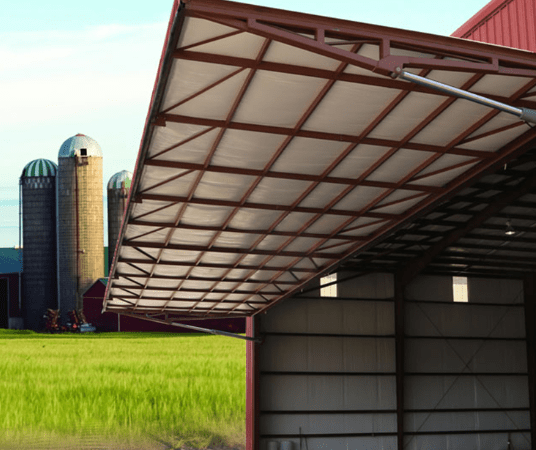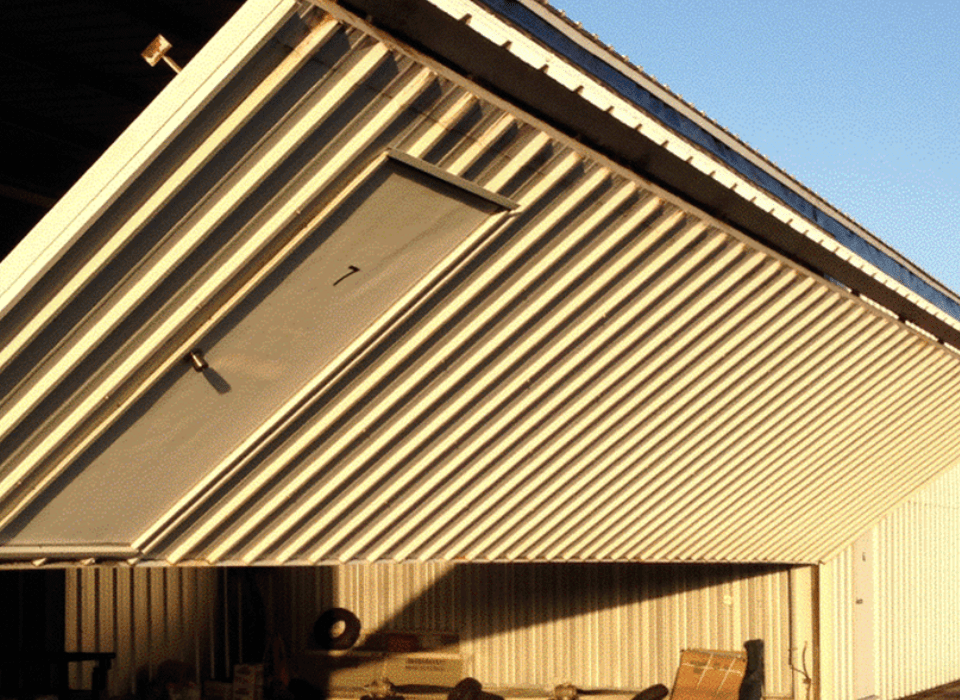When selecting a hangar door for your aviation or industrial space, two popular options are hydraulic and bi-fold doors. Below is a bullet-point comparison to help you make an informed decision:
Hydraulic Hangar Doors
- Single-Piece Design: Hydraulic doors open as a single panel, swinging outward like a large garage door.
- Simplicity: Fewer moving parts, reducing maintenance and potential repair issues.
- Seamless Insulation: Due to their one-piece construction, hydraulic doors provide better insulation, ideal for temperature-controlled environments.
- Quick Installation: Easier and faster to install compared to more complex door systems.
- Space Requirements: Requires exterior clearance when opening, which may not be ideal in tight spaces.
- Power Requirements: Operates using hydraulic pumps that require a steady power source.
- Ease of Operation: One-button control makes it easy to open and close the door, reducing manual effort.
- Weather Resistance: Seals tightly, offering excellent protection against wind, rain, and other harsh weather conditions.
- Cost: Generally more expensive due to hydraulic components and installation but lower maintenance costs over time.
-
Bi-Fold Hangar Doors
- Two-Piece Design: Bi-fold doors open vertically by folding in the middle, reducing the required exterior space.
- Compact Operation: Ideal for spaces with limited external clearance, as the door folds upward rather than swinging outward.
- More Moving Parts: Includes cables, pulleys, and hinges, which may require more frequent maintenance.
- Energy Efficiency: Less efficient in terms of insulation compared to hydraulic doors, but modern models come with improved weather seals.
- Installation Complexity: Requires more time and labor to install due to the intricate mechanisms involved.
- Customization: Bi-fold doors offer more flexibility in terms of size, making them suitable for large hangar openings.
- Durability: Well-constructed bi-fold doors are long-lasting but may require more regular inspections due to the many moving parts.
- Power and Manual Operation: Can be equipped with automatic openers, but manual operation is available in case of power failure.
- Cost: Typically less expensive upfront compared to hydraulic doors, but may incur higher maintenance costs over time.
Key Considerations
- Space Availability: Hydraulic doors need more outward clearance, while bi-fold doors are better for confined areas.
- Budget: Initial and ongoing costs may sway your decision. Hydraulic doors cost more upfront, but bi-fold doors might have higher maintenance expenses.
- Usage Frequency: If you frequently open and close the door, the simple operation of a hydraulic door may be preferable, but a bi-fold door’s compact fold could suit smaller spaces better.
- Insulation & Weatherproofing: Hydraulic doors excel in providing superior weather protection, but bi-fold doors with advanced seals can offer adequate protection for most climates.
In summary, hydraulic doors are perfect for those prioritizing ease of operation, superior insulation, and weather resistance, while bi-fold doors are a great fit for tight spaces and those looking for a cost-effective solution with customizable size options. Ready to find the best door for your needs? Contact Well Bilt Industries today!

